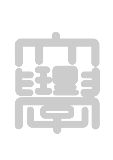Keiichi HISAEDA, Naomi OHTA, Naoki YAMAMOTO, Akira GOTO, Yoichi INOUE, Yasunori SHINOZUKA, Naoki SUZUKI, Naoki ISOBE
|
 |
This study examined the relationship between teat canal score (TCS), somatic cell count (SCC), pathogen infection, and milk antimicrobial components in each quarter of milking cows. A total of 110 quarters of 28 healthy Holstein milking cows were used for the TCS and collection of milk samples. Milk samples were analyzed for SCC, antimicrobial components (S100A7 and lingual antimicrobial peptide (LAP)), and acute phase protein (serum amyloid A (SAA)). Milk samples with SCC of at least 105 cells/mL were cultured to isolate and identify the causative organism. A total of 110 teats were classified, TCS of 1, 2, 3, 4 in 60.9% (67), 26.4% (29),11.8% (13) and 0.9% (1) teats, respectively. A positive correlation (r=0.6915, P<0.0001) was found between the TCS and SCC in all teats. Pathogens were detected in 100% of milk samples from TCS ≥3 milk and 91% of those from TCS 2. However, pathogens were detected in only 33% of milk samples from TCS 1, a significantly (P<0.0001) lower detection rate than those from TCS 2 and ≥3. The LAP concentration in the group with detected pathogen was significantly (P<0.01) higher than that in the no growth group. The results suggest that in quarters with higher TCS, SCC and LAP concentrations were significantly higher, milking it easier to detect pathogens due to the greater likelihood of bacterial invasion.
Research papers (academic journals)






